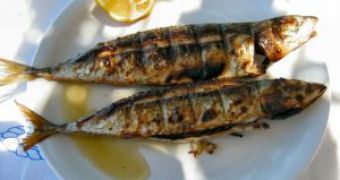A transparent human body would allow researchers to see many biological processes but also how cancer tumor develops, and how the tumor cells would spread through the body. Till the transparent human will be invented, a team at the University of California, San Diego (UCSD) School of Medicine used a small, transparent tropical fish common to aquariums to see how human cancer cells behave.
Zebrafish allowed the investigation of the most aggressive types of cancer, inflammatory breast cancer (IBC), finding two proteins involved in the metastasis (spread) of breast cancer. The results have been published in the Proceedings of the National Academy of Sciences online edition.
"By watching human breast cancer cells in real time in the live transgenic zebrafish, we were able to determine that two proteins are required in order for breast tumor cells to complete the most critical step of metastasis - entering the blood vessels," said first-author Dr. Konstantin Stoletov of the department of pathology at the UC-San Diego School of Medicine.
The first protein is a vascular endothelial growth factor (VEGF), released by cancerous cells to enhance the formation of new blood vessel (angiogenesis). The second, named RhoC, causes cell movement and is present in high levels in highly metastatic types of breast cancer. Both proteins were inert when alone in promoting tumor cells to penetrate into the blood vessels (intravasate). "But together, they promote rapid intravasation," said Stoletov.
IBC is the deadliest type of human breast cancer, killing over half of the patients in less than five years. For this investigation, the team engineered an immuno-suppressed zebrafish with a green fluorescent protein (GFP) synthesized only in its blood vessels, fact that permitted the visualization of the angiogenesis. The fish were injected with IBC cells stained in various colors, to assess the tumor progression.
The parental cancer cells were turned blue, and the moving cells over-synthesizing RhoC in red. On a several weeks survey, the team monitored the cancer's progression with high-resolution, multi-color confocal microscopy.
RhoC was discovered to enable an amoeboid-like movement, through "false feet", in the cancerous cells, and the cancer cells needed VEGF to get into the blood vessels. "In later stages of the cancerous tumor, the VEGF induces rapid formation of irregular, leaky blood vessels. We discovered that intravasation requires the secretion of VEGF, which disrupts the blood vessel wall, creating small openings that allow the tumor cells to penetrate and enter.", said Stoletov.
"Finding a way to suppress VEGF, thus inhibiting the growth of "leaky" blood vessels, could stop the movement of cancer cells into the blood vessels and the tumor's subsequent metastasis," said lead author Dr. Richard Klemke, professor of pathology at UCSD School of Medicine and the UCSD Moores Cancer Center.
Looking into the transparent fish, the team also checked a potential anti-cancer chemical inhibiting the VEGF receptor, which proved to impede the formation of the vascular openings, stopping intravasation.

 14 DAY TRIAL //
14 DAY TRIAL //